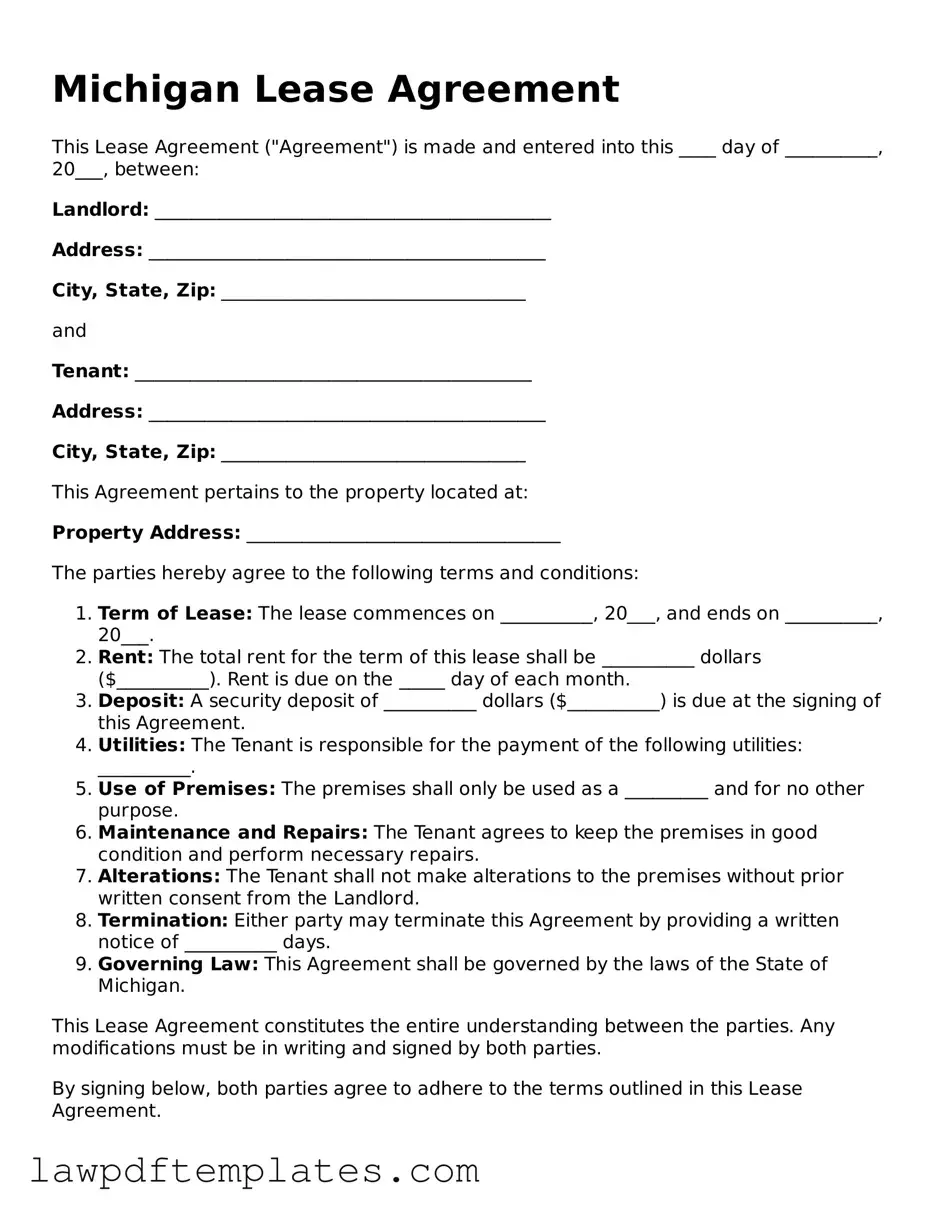Michigan Lease Agreement
This Lease Agreement ("Agreement") is made and entered into this ____ day of __________, 20___, between:
Landlord: ___________________________________________
Address: ___________________________________________
City, State, Zip: _________________________________
and
Tenant: ___________________________________________
Address: ___________________________________________
City, State, Zip: _________________________________
This Agreement pertains to the property located at:
Property Address: __________________________________
The parties hereby agree to the following terms and conditions:
- Term of Lease: The lease commences on __________, 20___, and ends on __________, 20___.
- Rent: The total rent for the term of this lease shall be __________ dollars ($__________). Rent is due on the _____ day of each month.
- Deposit: A security deposit of __________ dollars ($__________) is due at the signing of this Agreement.
- Utilities: The Tenant is responsible for the payment of the following utilities: __________.
- Use of Premises: The premises shall only be used as a _________ and for no other purpose.
- Maintenance and Repairs: The Tenant agrees to keep the premises in good condition and perform necessary repairs.
- Alterations: The Tenant shall not make alterations to the premises without prior written consent from the Landlord.
- Termination: Either party may terminate this Agreement by providing a written notice of __________ days.
- Governing Law: This Agreement shall be governed by the laws of the State of Michigan.
This Lease Agreement constitutes the entire understanding between the parties. Any modifications must be in writing and signed by both parties.
By signing below, both parties agree to adhere to the terms outlined in this Lease Agreement.
Landlord Signature: _______________________________
Date: ____________________
Tenant Signature: _______________________________
Date: ____________________
